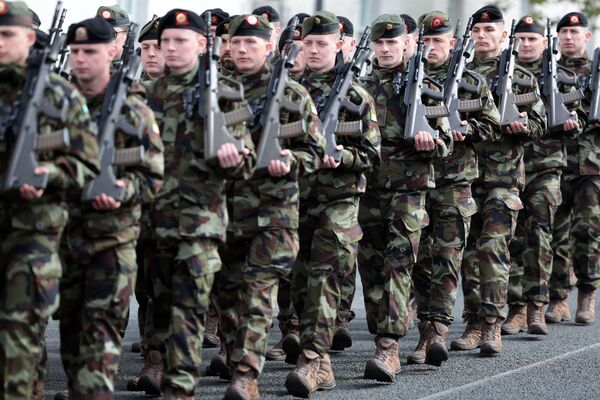IN recent weeks I’ve been interviewing a number of well-known people about how they see the prospect of a border poll and what obstacles lie between us and Irish unity.
As you probably know, there are two problems that often pop up in an enterprise like this. One is to get people to grant you an interview and the other is to get them to be specific.
Of those interviewed so far, Peadar Tóibín TD had the most concrete ideas. He compares the border to a wall that separates North and South, and he believes that if we address different bricks in that wall, we can remove them, so that over the next five years the border will have become lower and the final move to a united Ireland won’t feel so sudden or even traumatic.
It's an interesting idea. There are any number of bricks which could be considered – health, transport, education – but apart from Tóibín, I’ve heard no one addressing any of them.
More than twenty years ago I used to teach the Post-graduate Certificate in Education (PGCE). Its Southern equivalent was and is the Higher Diploma in Education (H Dip). Both courses spent a year preparing graduates in different subjects – English, History, Geography, Music, etc – how best to pass on their knowledge and skills to youngsters in secondary classrooms.
I was surprised to discover that the post-graduate students at Ollscoil Uladh /Ulster University knew absolutely nothing about the H Dip, and how it differed from their course. For example, OU/UU students spend a block of weeks attending lectures and workshops in UU, with intervening blocks of weeks in local schools on teaching practice. When they discovered that in the South, a contrasting routine operated – each morning in schools on teaching practice, each afternoon in the University – it raised some worthwhile questions. Was the UU method better than that used South of the border? Why did we have the system we have? Did students North and South and their tutors have anything to learn from each other?
But no mechanism was in place so that the institutions could meet and compare and learn from one another. In fact, university staff south of the border used to have a couple of days each year where they held a conference, at which teachers and lecturers discussed their work and read papers about it.
I used to attend these conferences south of the border, but I was alone in my interest. The rest of the UU staff simply couldn’t be bothered. We in UU also tended to have external examiners from other universities, but the rule – occasionally broken by mavericks like myself – was that external examiners should be drawn from universities in the UK, on the grounds that they ‘understood the system better’.
Looking back at it now, some twenty years later, it seems almost incredible that those concerned with education North and South would ignore each other, given that there was much each could have learned from the other.
Our schools too are similar but different. The big differentiator is the current form of the Eleven Plus which absurdly believes judgement on the academic abilities of young people can be made at the age of eleven. The South in contrast is seen as having one of the best-educated work forces in the world. While education should be about more than preparation for work – what about preparation for life? – it’s obvious that we in the North could learn from the Southern system, and vice versa.
The same applies to health, the economy, infrastructure. In the border areas this is already happening – every day thousands cross the border, sometimes several times a day – and benefit from this kind of integration.
If there was never the prospect of a unity referendum, it makes sense for these aspects of society to know about each other and work with each other. Given that there is a border poll coming, it’s past time that governments on both sides got their coats off and began to work with and even integrate the two different systems. We have a huge amount to learn about and from each other. Both Dublin and Stormont need to start the work now. Not next year – now.








